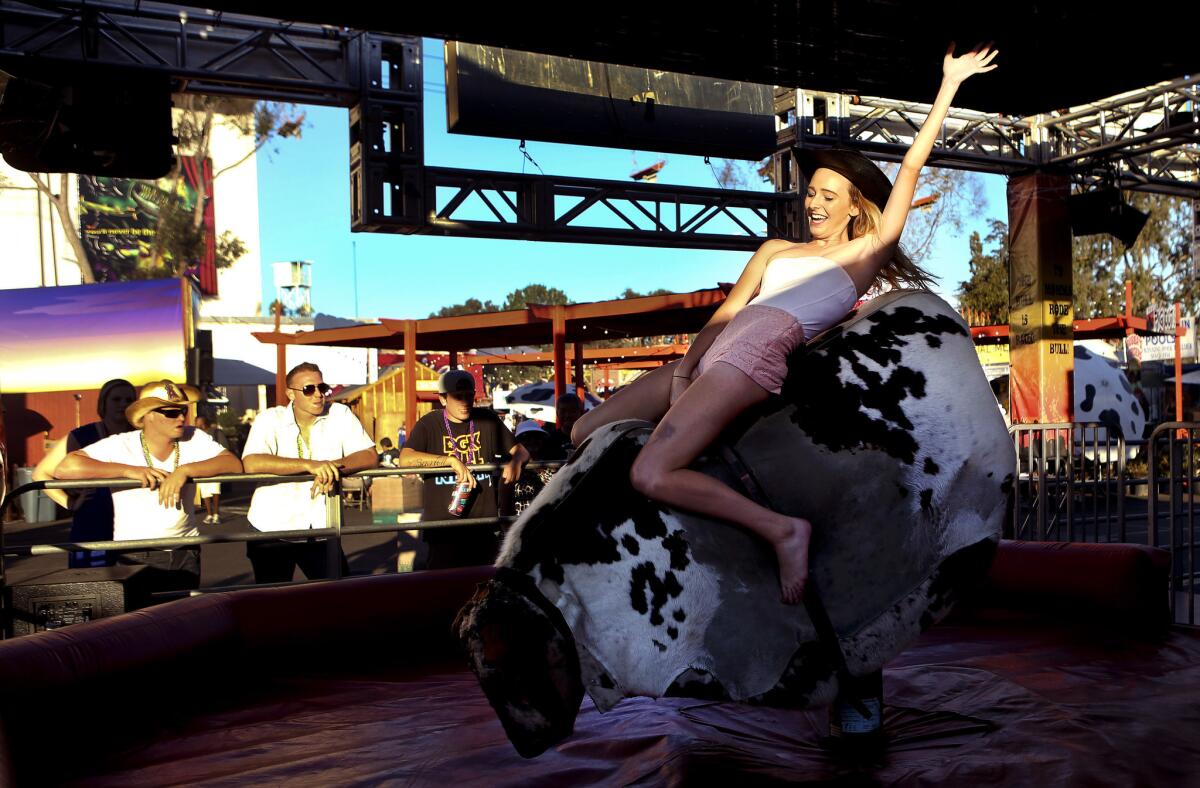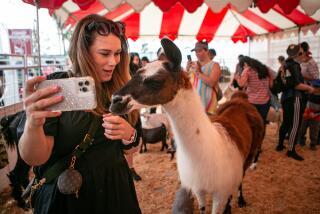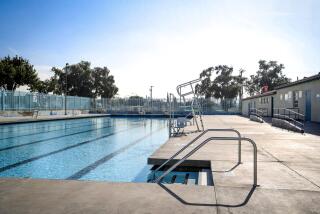Mass shootings push the L.A. County Fair to upgrade security

In the wake of recent mass shootings, the Los Angeles County Fair’s operators are beefing up security, bringing a higher level of scrutiny to the annual summer celebration of carnival rides, high-calorie snacks and farm animals.
“In light of the environment, we’ve made significant investment to make sure our guests and employees are safe,” said Miguel Santana, chief executive of Fairplex, a private nonprofit that operates the fair, this year from Aug. 30-Sept. 22, at its 487-acre facility in Pomona. “We always take security seriously but we’ve made a deliberate effort to strengthen our security system.”
Fairplex has spent $200,000 to build a command center in the fairgrounds where police, fire officials and other emergency staff can coordinate a response to an emergency, Santana said. Extra video cameras have been added to monitor the perimeter, as well as metal detectors and a badge-scanning system to screen fair employees and contractors before they enter the grounds, he said.
Security experts say managers of festivals and events that draw large crowds should be working to improve communication between police, security agents and other employees, as well as adding patrols and video monitoring at the perimeter of such events. The gunman at the Gilroy Garlic Festival gained entry by cutting a hole in a fence before killing three and wounding more than a dozen on July 28.
“Speaking the same language in the interest of public safety is really paramount,” said James DeMeo, a retired police detective and founder of Unified Sports & Entertainment Security Consulting.
Americans are anxious about attending events with large crowds, DeMeo said, so it makes sense that organizers announce publicly their security improvement projects.
“A lot of people tell me on a daily basis that they are afraid to go out to a confined space,” he said.
Shortly after a 2015 mass shooting in San Bernardino that left 14 people dead, the Disneyland Resort in Anaheim and Universal Studios Hollywood added several security measures, including metal detectors to screen guests. The move was an acknowledgment by the theme park industry that past insistence on discreet, behind-the-scenes security didn’t go far enough to protect visitors from potential attacks.
Disneyland Resort spokeswoman Lisa Haines declined to discuss whether any additional safety enhancements have been made at Disneyland and California Adventure except to say: “We continually review our comprehensive approach to security.”
Universal Studios Hollywood spokeswoman Audrey Eig said the park managers “continuously monitor and adjust our security procedures partnering with local law enforcement to ensure a safe and secure environment.” The theme park also has a Los Angeles County sheriff’s station on the property, Eig noted.
The county fair has long required guests to go through a metal detector before entering the grounds. In addition to the new screening requirements for employees, Santana said security forces at the Fairplex recently conducted a training exercise to replicate and respond to the type of mass shooting that took place in 2017 in Las Vegas, where a gunman killed 58 people and wounded 422 others attending the Route 91 Harvest country music festival.
The extra security is being added as Fairplex tries to build on a financial rebound from years of deficits and fluctuating attendance numbers.
Fairplex, which operates a hotel and sponsors concerts and car shows, among other events throughout the year, generated a profit last year of more than $611,000, after eight years of deficits. The organization lost nearly $15 million from 2014 to 2017, according to financial records.
Attendance at the fair jumped 5% last year, to 1.13 million guests, following a 7% decline in visitors in 2017.
Santana, who was previously Los Angeles’ city administrative officer, attributes the turnaround at the Fairplex to a financial overhaul — including cutting executive pay by 40% — he launched after taking over the operation in January 2017.
As for the annual fair, the daily ticket price has remained frozen at the price charged in 2016: $14 for adults on weekdays and $20 for weekends. Santana said he also persuaded most food vendors in the fair last year to offer a discounted meal package for $6.60. This year, the attendance price will not increase and the meal deals at food vendors will cost $6.50.
The fair also plans to offer days when residents of different areas of Southern California can attend at a deeply discounted price. For example, on Sept. 1, all residents of Los Angeles County can visit the fair for $8.
More to Read
Inside the business of entertainment
The Wide Shot brings you news, analysis and insights on everything from streaming wars to production — and what it all means for the future.
You may occasionally receive promotional content from the Los Angeles Times.











